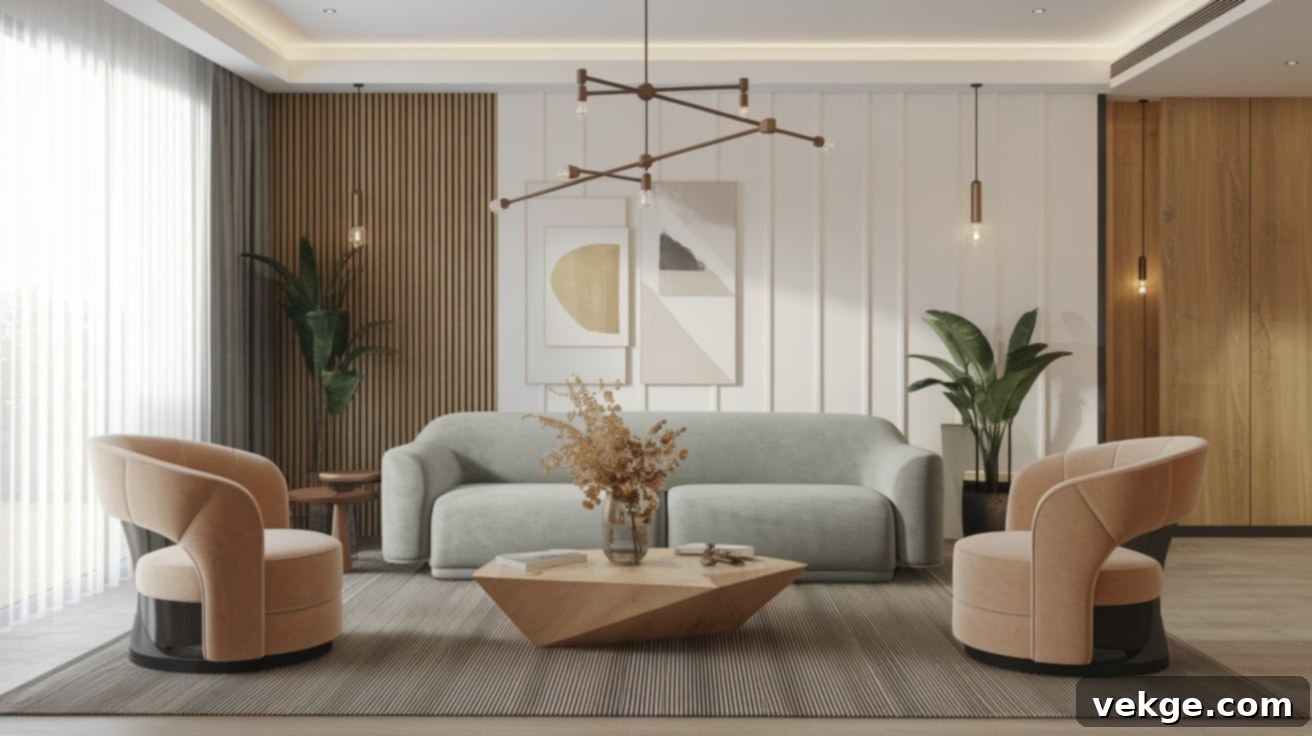Realistic Form in Interior Design: Crafting Functional & Beautiful Spaces You’ll Love
Have you ever stepped into a room that immediately felt welcoming and comfortable, as if it was designed just for you? Or perhaps you’ve encountered a space that looked stunning in photos but felt awkward and impractical in person? The secret to creating truly livable and enjoyable environments lies in a fundamental concept designers call realistic form in interior design.
Form isn’t just an abstract design term; it’s about the tangible shapes and structures of your furniture, decor, and architectural elements working in harmony. It’s about how your sofa, table, and chairs occupy space, not just visually, but also in how they support your daily life and evoke a sense of well-being. When forms are realistic, they acknowledge human needs, comfort, and the practicalities of everyday living, transforming a mere structure into a functional and beautiful home.
This comprehensive guide will demystify what realistic form truly means, explore the foundational principles that bring it to life, delve into various types of forms, and offer practical strategies for integrating them into your home. We’ll also address common challenges and provide actionable solutions to help you design spaces that are not only aesthetically pleasing but genuinely enriching to live in. Your home should be a source of happiness and comfort – let’s make that a reality together.
What is Realistic Form in Interior Design?
At its core, form dictates how we interact with and feel within our surroundings. In interior design, form refers to the actual shapes, outlines, and structures of objects that populate a space, from the grand dimensions of a room to the intricate details of a decorative piece. When we talk about realistic form, we emphasize how these real, tangible objects, with their inherent shapes and materials, combine to create environments that are both highly functional and visually appealing.
Defining Realistic Form in Your Home
Simply put, form encompasses the shape, size, and three-dimensional structure of every item in your room. Consider your living room: the sturdy rectangular coffee table, the soft, inviting curves of your sofa, or the unique, sculptural vase on your mantelpiece – each possesses its own distinct form. These forms are typically categorized into three main types, each contributing a unique quality to the overall design:
- Geometric Forms: Characterized by sharp lines, precise angles, and consistent dimensions. Think of square tables, rectangular bookshelves, cylindrical lamps, or cubic ottomans. These forms convey order, stability, and often a modern aesthetic.
- Organic Forms: Inspired by nature, featuring fluid lines, gentle curves, and irregular shapes. Examples include a pebble-shaped coffee table, a sofa with soft, rounded edges, or a chair designed to contour to the human body. Organic forms introduce a sense of relaxation, softness, and connection to the natural world.
- Abstract Forms: These are unique, often unconventional shapes that defy strict geometric or organic classifications. They might be sculptural, artistic, and serve as striking focal points. An abstract lamp, a uniquely shaped mirror, or a piece of wall art can inject personality and a sense of artistic expression into a space.
The art of good realistic design lies in skillfully blending these different forms. By understanding and intentionally combining them, you can create rooms that not only look right but also feel perfectly aligned with their purpose and your personal comfort.
The Importance of Realistic Form for Daily Living
Realistic forms are crucial because they ground your space in authenticity and integrity. When a chair not only looks comfortable but genuinely provides ergonomic support, it fosters a sense of trust and reliability. This fundamental honesty in design helps your space serve its intended purpose effectively – whether that’s providing a serene sanctuary for rest, an inspiring environment for work, or a dynamic area for play and social interaction.
Beyond shape, the materials used in realistic forms further enhance this authentic feeling. Natural elements like rich, warm wood; cool, solid stone; or strong, versatile metal bring the tactile qualities of the physical world indoors. They connect us to nature, adding depth, texture, and a sense of permanence. Spaces designed with realistic forms and natural materials feel substantial and true, offering a comforting and dependable backdrop for your life.
Key Principles of Realistic Form in Interior Design
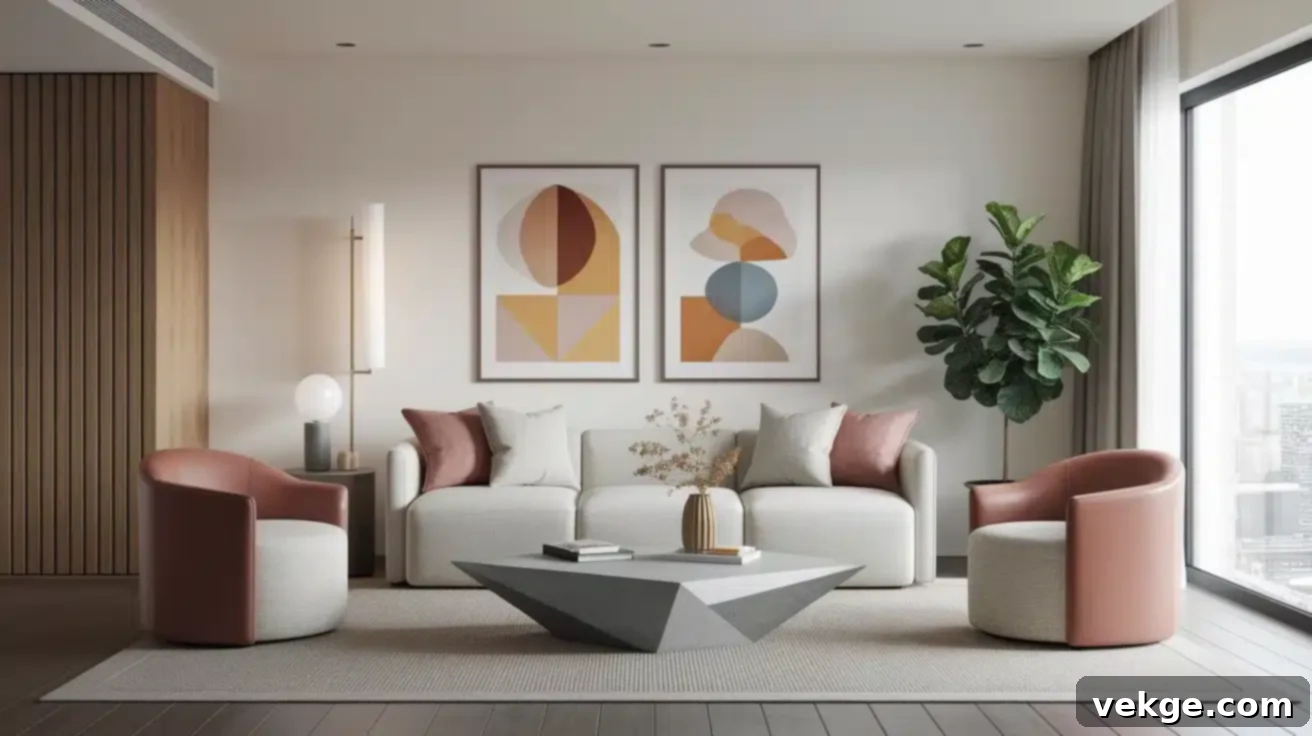
Achieving effective form in your rooms isn’t about rigid rules, but rather understanding a few guiding principles. These ideas help shapes and spaces interact harmoniously, creating environments that are both functional and deeply satisfying. Let’s explore how to apply these concepts to design rooms you’ll genuinely love living in.
Balancing Geometric and Organic Forms for Visual Harmony
A well-designed room often features a thoughtful blend of straight-edged geometric forms and soft, flowing organic shapes. Imagine a sleek, rectangular dining table complemented by chairs with gently curved backs, or a rectilinear bookshelf standing beside a plush sofa with rounded arms. This interplay creates visual interest and prevents a room from feeling too stiff or too whimsical. It mirrors the balance found in nature, where order and fluid movement coexist, resulting in a space that feels natural, dynamic, and visually engaging. This balance contributes significantly to a realistic and comfortable aesthetic.
Leveraging Positive and Negative Space for Clarity
In design, positive space refers to the areas occupied by objects (your furniture, decor), while negative space is the empty area surrounding those objects. Both are equally important. Think of it like a musical composition where both the notes and the pauses contribute to the melody. Giving your favorite armchair ample room to breathe, or ensuring there’s enough clear floor space around a coffee table, prevents a room from feeling cluttered and cramped. When objects aren’t crammed together, the eye has room to rest, and the mind feels calmer and more at ease. Thoughtful use of negative space allows each form to be appreciated individually and enhances the overall functionality of the room.
Mastering Scale and Proportion for a Cohesive Look
The size of your furniture and decor relative to each other and to the room itself (scale), along with the harmonious relationship between different parts of an object or between objects (proportion), are critical. A diminutive side table next to an oversized sectional sofa can create an unsettling imbalance. Instead, strive for a comfortable mix: a grand sofa might be paired with medium-sized accent tables and smaller, delicate lamps. When elements are appropriately scaled and proportioned, the room feels cohesive, balanced, and visually correct, enhancing the realistic comfort and usability of the space.
Creating Contrast with Forms for Dynamic Interest
Introducing contrast through varying forms adds visual energy and prevents a room from appearing flat or monotonous. Pair a sharp-edged console table with a collection of smooth, round vases. Combine straight-backed dining chairs with an oval dining table. Or contrast a minimalist, geometric floor lamp with a soft, organic rug. These opposing forms create a dynamic tension that draws the eye and adds layers of interest, making the space feel more intentional and alive. Contrast highlights individual forms and contributes to a rich, nuanced design experience.
Incorporating Texture and Pattern to Enrich Forms
While form defines shape, texture (how something feels) and pattern (repeated design elements) add depth and character. The smoothness of polished glass, the rough grain of reclaimed wood, the softness of a velvet cushion, or the intricate weave of a wool rug all bring unique sensory qualities. Textures can emphasize or soften forms; for instance, a rough-textured rug can ground a sleek, modern sofa. Patterns on fabrics, wallpapers, or accessories can further highlight and complement the underlying forms of your furniture, making your space feel richer, more inviting, and full of life without necessarily changing the primary shapes.
How to Achieve Realistic Form Interior Design in Your Home
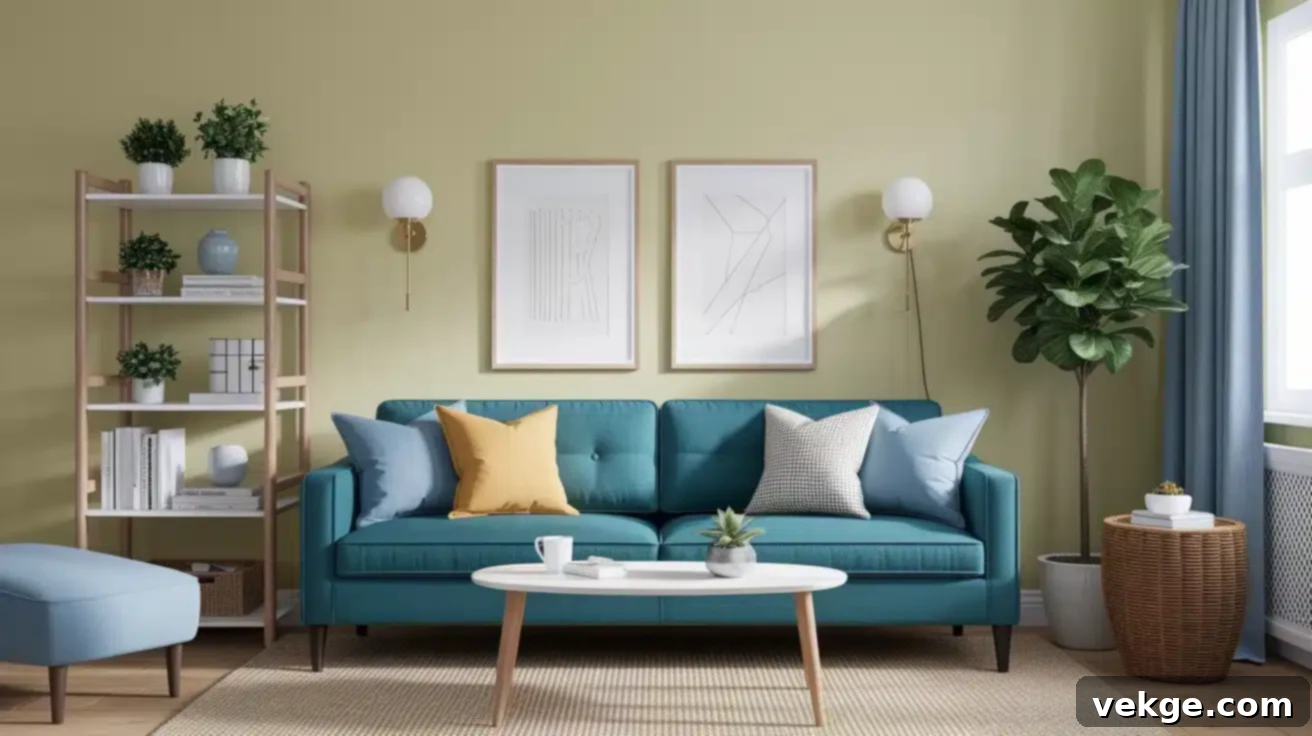
Integrating realistic form into your home is a straightforward process when you focus on purpose and personal connection. These actionable tips will help you craft spaces that genuinely support your lifestyle and reflect your unique tastes.
Selecting the Right Form for Your Room’s Function
Before choosing any piece of furniture, consider the primary activities that will take place in each room. The function of a space should always guide your selection of forms. For instance:
- Bedrooms: These are sanctuaries for rest. Opt for soft, organic, and curvy pieces that promote relaxation – a plush bed with a tufted headboard, rounded nightstands, or an armchair with gentle contours.
- Home Offices: Spaces for focus and productivity benefit from more geometric, straight-edged desks, ergonomic chairs, and shelves. These forms aid in organization and create an environment conducive to concentration.
- Living Rooms: Often multi-functional, these spaces can blend both organic and geometric forms to create a comfortable yet sophisticated atmosphere. A large, inviting sofa with soft cushions can be balanced by a structured coffee table.
- Kitchens: Typically favor highly practical and often geometric forms for cabinets, islands, and appliances, prioritizing efficiency and clean lines for food preparation.
When the forms within a room align with its intended function, you’ll find the space feels more intuitive, comfortable, and efficient, truly embodying the principles of realistic form.
Using Form to Define Zones in Open Concepts
In open-plan layouts, strategic use of furniture forms can effectively create distinct “rooms within rooms” without the need for physical walls. This technique helps define different functional areas and provides a sense of structure:
- Tall, Linear Forms: A tall, rectangular bookshelf or a screen can act as a subtle divider, visually separating a living area from a dining space or an entryway.
- Low, Grounding Forms: A low, broad coffee table or a large area rug can clearly delineate a seating zone, inviting people to gather and relax within that specific boundary.
- Multi-functional Forms: For smaller homes or apartments, furniture that serves multiple purposes is a cornerstone of realistic design. Ottomans with hidden storage, extendable dining tables, or sofa beds are excellent examples. These adaptable forms maximize utility without compromising on aesthetic appeal, making tiny spaces work harder and smarter for you.
By thoughtfully placing and selecting forms, you can enhance the usability and perceived spaciousness of any layout.
Personalizing with Meaningful Decor and Realistic Forms
Your home should tell your unique story, and the forms of your decor can be powerful storytellers. Choose items whose shapes resonate with you and reflect your personality and experiences. For example:
- Emotive Shapes: Perhaps smooth, round vases remind you of cherished beach stones from a vacation, or angular photo frames echo a modern, artistic sensibility you appreciate.
- Blended Practicality and Beauty: Ensure that decorative items also offer practical benefits or evoke comfort. A chunky knit blanket with an inviting texture and form should not only look good draped over your couch but also feel wonderfully soft to the touch.
When your decor includes forms that hold personal meaning, your home transcends being just a collection of objects; it becomes a deeply personal and authentic reflection of who you are, making it truly *your* space.
Types of Form in Interior Design: A Deeper Dive
Every shape in your room contributes to its narrative and influences how you perceive and experience the space. Understanding the main types of forms allows you to intentionally craft environments that feel just right. Let’s explore these categories in more detail.
Geometric Forms: Order and Structure
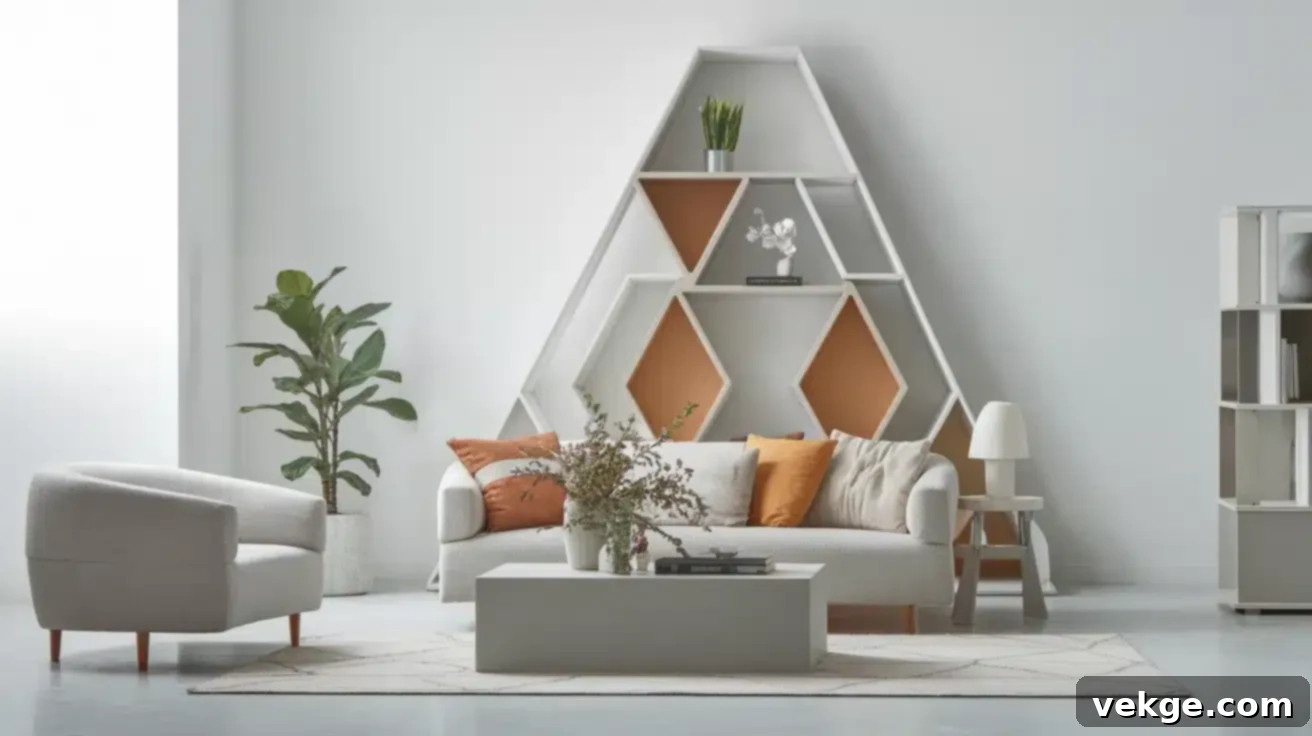
Geometric forms are characterized by their clear, precise lines, sharp angles, and often symmetrical nature. They include squares, rectangles, circles, triangles, cylinders, and cubes. Think of a minimalist rectangular dining table, a modular sofa with straight lines, a collection of square art prints, or a precisely crafted bookshelf. These forms inherently convey a sense of order, stability, and structure.
Rooms that predominantly feature geometric forms tend to feel organized, clean, and often modern or contemporary. They are excellent for spaces where clarity and focus are desired, such as home offices, kitchens, or minimalist living areas. While they can sometimes feel rigid if overused, when balanced with other forms, geometric shapes provide a vital backbone to a realistic and functional design, ensuring elements feel grounded and intentional.
Organic Forms: Nature’s Embrace
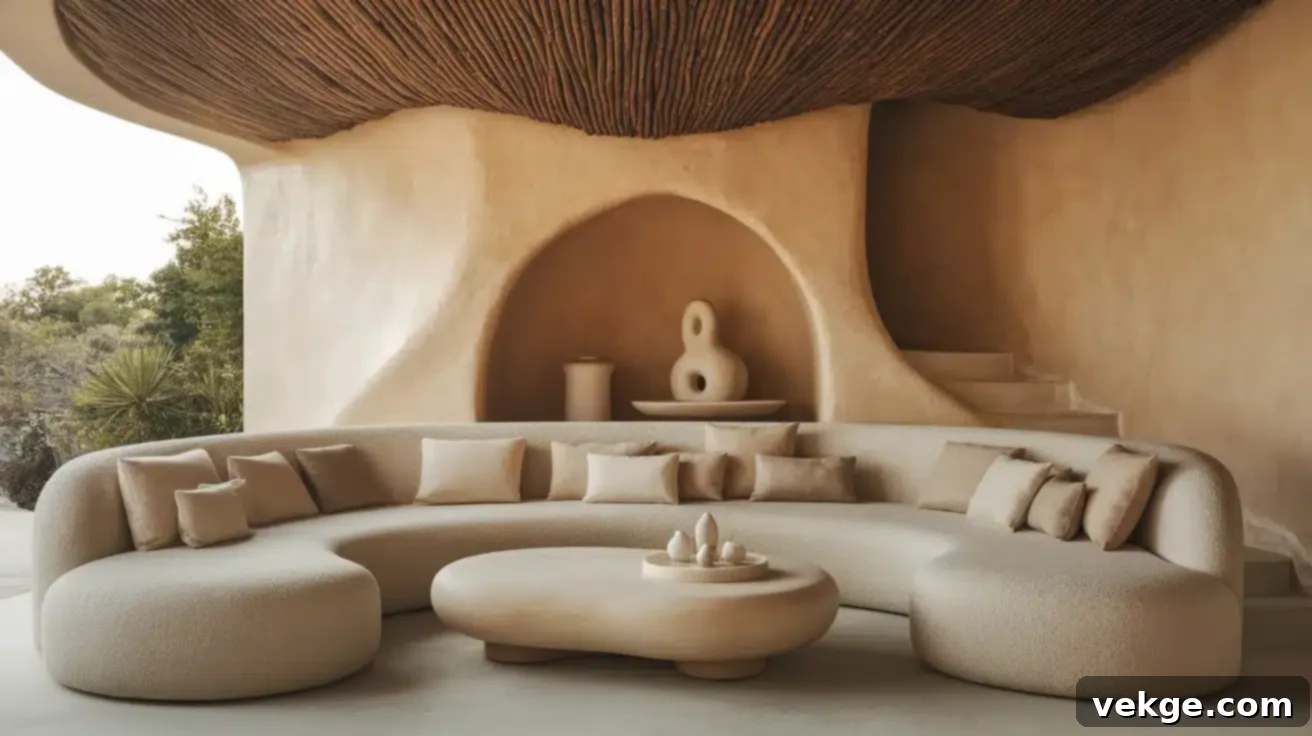
Organic forms draw their inspiration from the natural world, featuring soft, flowing lines, gentle curves, and often asymmetrical or irregular outlines. Imagine the inviting curve of a kidney-shaped coffee table, the ergonomic contours of an armchair that perfectly cradles your body, a naturally shaped piece of driftwood as decor, or a vase resembling a smooth river stone. These shapes evoke a sense of comfort, softness, and connection to nature.
Incorporating organic forms into your home can significantly soften the mood of a room, making it feel more relaxed, welcoming, and intimate. They are perfect for bedrooms, cozy living areas, or any space where you seek to unwind and feel connected to the natural environment. Organic forms counteract the potential harshness of geometric elements, creating a balanced and deeply realistic sense of comfort.
Abstract Forms: Personality and Artistic Expression
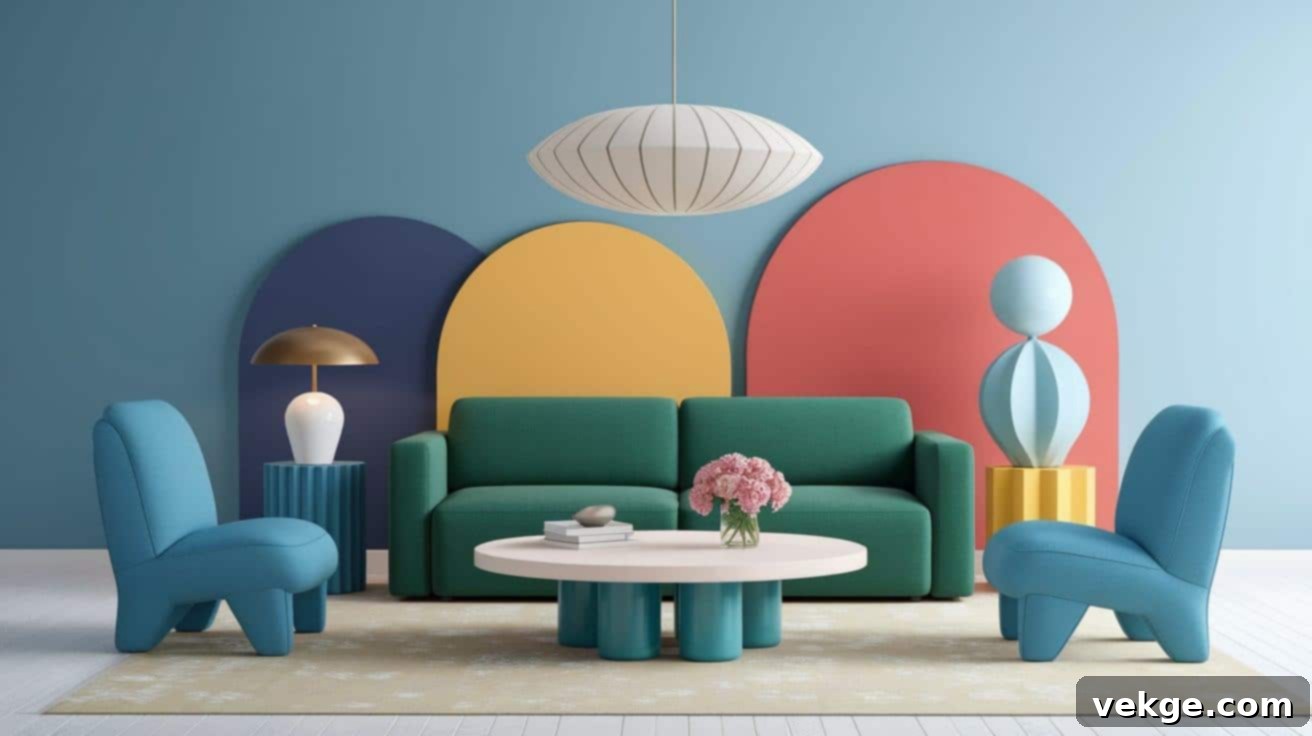
Abstract forms are unique and unconventional, often defying easy categorization into geometric or organic definitions. They are typically sculptural, artistic, and serve as striking focal points that spark conversation. Examples might include an unusually shaped lamp, a highly stylized piece of furniture that challenges traditional design, or a piece of abstract art that creates a strong visual statement. These forms are often original, imaginative, and push the boundaries of conventional aesthetics.
Abstract forms are ideal for injecting personality, whimsy, and a sense of individuality into your space. They are conversation starters and mood lifters, perfect for those who want their home to reflect a unique artistic sensibility. While care must be taken to ensure they don’t overwhelm a space, when thoughtfully integrated, abstract forms can transform a room from ordinary to extraordinary, helping your home tell a truly distinctive and personal story within a realistic framework.
Realistic Form vs. Avant-Garde Design: The Comfort-Functionality Divide
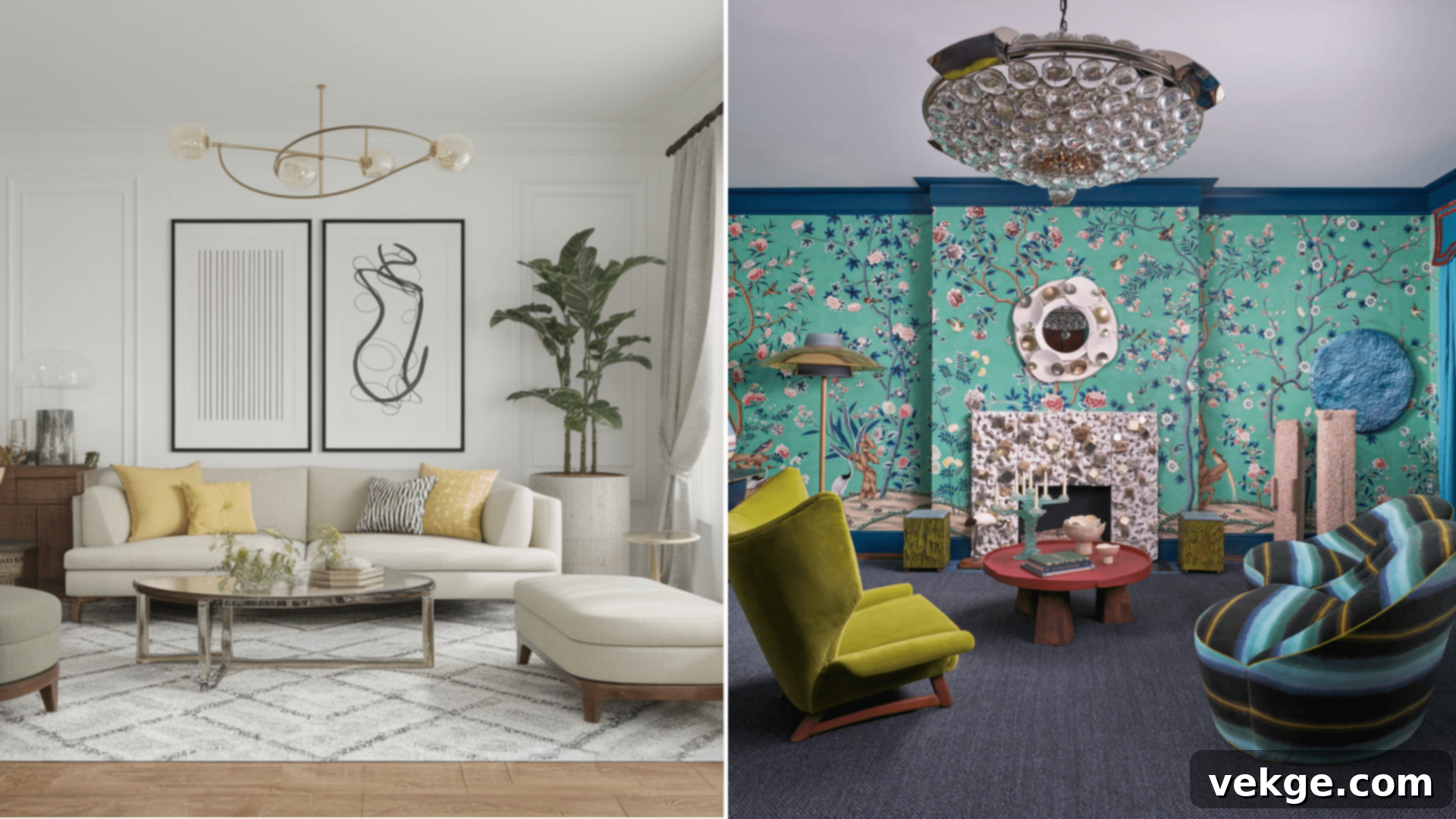
The distinction between realistic form and avant-garde design is critical for creating a truly livable home. While an avant-garde piece—like a chair shaped purely for sculptural effect—might garner praise in a gallery or a high-fashion magazine, it often falls short when confronted with the demands of everyday life. This is the fundamental gap between design as art and design as a functional component of living.
Realistic forms prioritize your needs and comfort above all else. They are shapes that make intuitive sense for the human body and daily routines. A sofa you can genuinely sink into after a long day, a dining table that comfortably accommodates your family, or a desk that supports ergonomic work – these are all hallmarks of realistic form. Such pieces are designed with a deep understanding of human interaction, ensuring that comfort, utility, and durability are woven into their very structure.
In contrast, avant-garde design often prioritizes extreme aesthetics, conceptual statements, or radical innovation, sometimes at the expense of practicality. A chair with sharp, unyielding edges where curves are needed for comfort, or a visually stunning but impossibly tall display unit, exemplifies this approach. While these pieces can be thought-provoking and visually arresting, they can also lead to discomfort, frustration, or simply being impractical for the common user. They might be conversation starters, but they can leave you feeling sore, inconvenienced, or wishing for something more down-to-earth.
Your home should be a supportive environment, not a challenging art installation. Choosing realistic forms means selecting a design philosophy that enhances your quality of life, rather than merely serving as a visual spectacle. It’s the difference between admiring a piece of art and comfortably living within a thoughtfully designed, functional, and beautiful space.
Personalizing Your Realistic Form Design
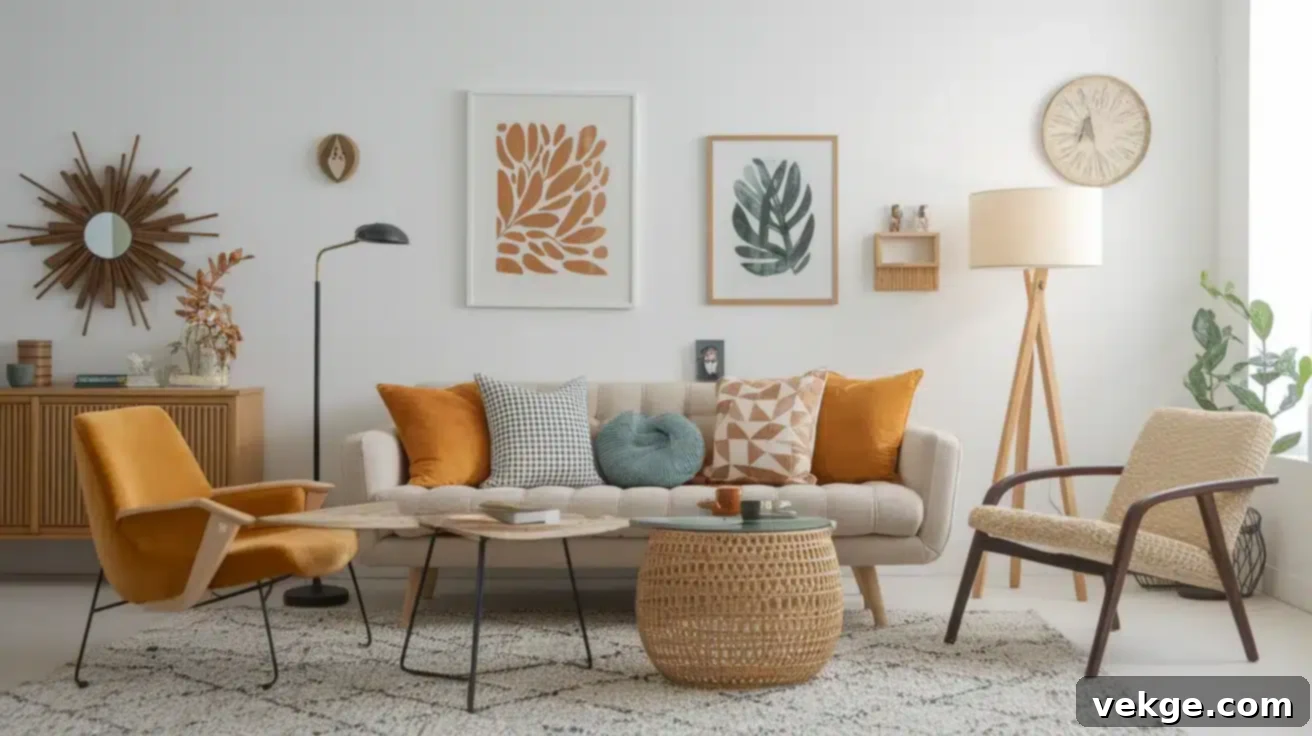
Making your space uniquely yours doesn’t require sacrificing good design principles or breaking the bank. Here’s how to infuse your personality into a realistically formed space while maintaining functionality and style.
Mixing Styles for a Unique Narrative
Embrace eclecticism! Don’t feel constrained by adhering to a single design style. A modern, clean-lined sofa can beautifully coexist with a cherished antique side table inherited from your grandmother. Your vibrant collection of guitars can be displayed alongside minimalist shelving units. The key to successful style mixing is finding a common thread that subtly ties diverse elements together—perhaps a consistent color palette, a shared material (like wood or metal), or a recurring textural element. When you blend styles that resonate with your personal history and aesthetic preferences, your space becomes a rich tapestry that narrates your unique journey and adds depth to its realistic forms.
Budgeting Tips for Smart Design Choices
Achieving excellent form in your home doesn’t necessarily require an extravagant budget. Smart choices can yield impressive results:
- Invest Wisely: Start by investing in one or two high-quality, realistically formed pieces that you absolutely love and that serve a core function, then build the rest of your room around them.
- Thrift Store Treasures: Hunt for pieces with good, solid basic forms at second-hand shops, flea markets, or online marketplaces. A sturdy wooden chest or a simple, well-built chair can be transformed with a fresh coat of paint, new hardware, or updated upholstery.
- Prioritize Natural Materials: Often, natural materials like solid wood, stone, or durable fabrics age gracefully and last longer, offering better long-term value than cheaper, synthetic alternatives.
- Embrace Negative Space: Remember, empty space costs nothing and is a powerful design tool. It allows your chosen pieces to breathe and makes your special items stand out, creating a sense of calm and sophistication without adding more objects.
Common Challenges & Solutions in Realistic Form Interior Design
Even with a clear understanding of realistic form, you might encounter common hurdles when styling your home. These challenges, however, are universal and come with practical solutions to help you overcome feelings of being stuck or stressed about your living space.
1. Challenge: Small rooms making furniture placement tricky.
- Solution: Prioritize multi-functional furniture. Opt for a bed with integrated storage drawers, an ottoman that doubles as a coffee table and blanket storage, or nesting tables that can be expanded when needed. Think vertically by utilizing wall-mounted shelving and tall, narrow bookcases to maximize floor space. Choose pieces with lighter forms or transparent materials (like glass tables) to visually open up the room.
2. Challenge: Tight budgets limiting buying options.
- Solution: Adopt a “buy quality, not quantity” approach. Instead of purchasing an entire cheap set at once, save up for one or two timeless, well-constructed pieces that embody realistic form. Explore second-hand shops, antique stores, and online marketplaces for solid, well-built items that can be upcycled with new paint, hardware, or fabric. DIY projects can also breathe new life into existing pieces.
3. Challenge: Too many items making spaces feel cluttered and overwhelming.
- Solution: Implement the “one in, one out” rule: whenever a new item enters your home, an old one must leave. Regularly declutter by donating, selling, or discarding items that no longer serve a purpose or bring you joy. Embrace the power of empty space; it allows your cherished items to stand out and creates a sense of calm and order, which is a hallmark of good realistic form.
4. Challenge: Working with odd room shapes or built-in architectural features.
- Solution: Instead of fighting against unusual architectural elements, embrace them as unique design opportunities. A quirky corner can be transformed into a cozy reading nook with a custom-built bench or a strategically placed armchair. A low-ceilinged area can become an intimate seating zone. Use built-in features to your advantage by integrating furniture that complements their forms, creating a bespoke and harmonious look.
5. Challenge: Making rooms work for multiple uses or accommodating different people’s needs.
- Solution: Use forms to create distinct zones within multi-functional rooms. Area rugs can visually define a living space from a dining area. Room dividers, screens, or even the strategic placement of furniture (e.g., a sofa facing away from a desk) can create clear boundaries. Opt for flexible furniture like modular seating or easily reconfigurable tables. Consider the flow and activities of each person to ensure the chosen forms support everyone’s comfort and functionality.
Conclusion: Embracing Realistic Form for a Truly Livable Home
Creating a home with a strong foundation in realistic form isn’t about adhering to rigid, unyielding rules; it’s about a thoughtful and intuitive approach to design that genuinely enhances your daily life. Your home should be a place that feels good to inhabit, not just a beautiful image captured in a photograph. It’s about achieving a harmonious balance where structure meets comfort, where order blends seamlessly with personal expression, and where every shape serves a purpose.
Throughout this guide, we’ve explored how a mindful interplay of geometric, organic, and abstract forms, coupled with an understanding of positive and negative space, appropriate scale, and the richness of texture, can profoundly transform your living environments. These principles empower you to design spaces that are not only visually appealing but also deeply functional, comfortable, and reflective of your unique personality.
Don’t feel overwhelmed; start small. Begin by applying one or two ideas at a time. Perhaps you’ll introduce some soft, curved pillows to complement your angular sofa, or you’ll rearrange your living room to give your favorite reading chair a little more breathing room. Notice the subtle shifts in how the space feels and functions. These small, intentional adjustments can lead to significant improvements in your home’s overall ambiance and usability.
Ultimately, a home designed with realistic form supports you, nurtures you, and adapts to your life, rather than challenging you. It’s an investment in your well-being and a testament to the idea that true beauty in design is found where aesthetics and practicality merge seamlessly. Embrace these principles, and create a home that truly feels like an extension of yourself.
